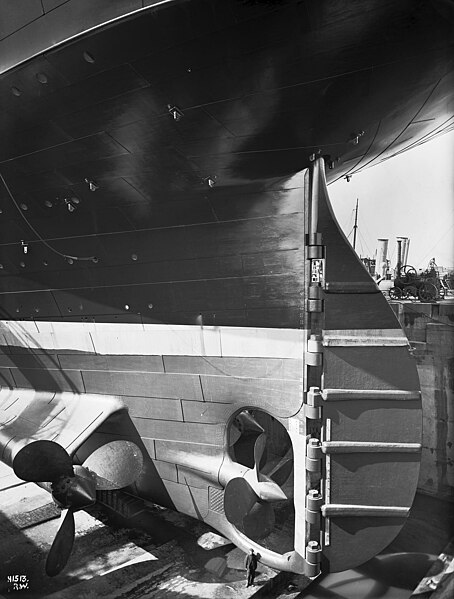A vertical stabilizer or tail fin is the static part of the vertical tail of an aircraft. The term is commonly applied to the assembly of both this fixed surface and one or more movable rudders hinged to it. Their role is to provide control, stability and trim in yaw. It is part of the aircraft empennage, specifically of its stabilizers.
The rudder is controlled through rudder pedals on the bottom rear of the yoke in this photo of a Boeing 727 cockpit.
Rudder and trim tab on a light aircraft
The water rudders on this Cessna 208 Caravan floatplane are the small vertical surfaces on the rear end of each float. Their setting is controlled from the cockpit.
Dual ventral fins on an F-16
A rudder is a primary control surface used to steer a ship, boat, submarine, hovercraft, airship, or other vehicle that moves through a fluid medium. On an airplane, the rudder is used primarily to counter adverse yaw and p-factor and is not the primary control used to turn the airplane. A rudder operates by redirecting the fluid past the hull or fuselage, thus imparting a turning or yawing motion to the craft. In basic form, a rudder is a flat plane or sheet of material attached with hinges to the craft's stern, tail, or after end. Often rudders are shaped so as to minimize hydrodynamic or aerodynamic drag. On simple watercraft, a tiller—essentially, a stick or pole acting as a lever arm—may be attached to the top of the rudder to allow it to be turned by a helmsman. In larger vessels, cables, pushrods, or hydraulics may be used to link rudders to steering wheels. In typical aircraft, the rudder is operated by pedals via mechanical linkages or hydraulics.

Modern ship rudder (the long red rectangle behind the propeller)
RMS Olympic's rudder turned
Stern-mounted steering oar of an Egyptian riverboat depicted in the Tomb of Menna (c. 1422–1411 BC)
Steering oar of a Roman boat, 1st century AD (RG-Museum, Cologne)








